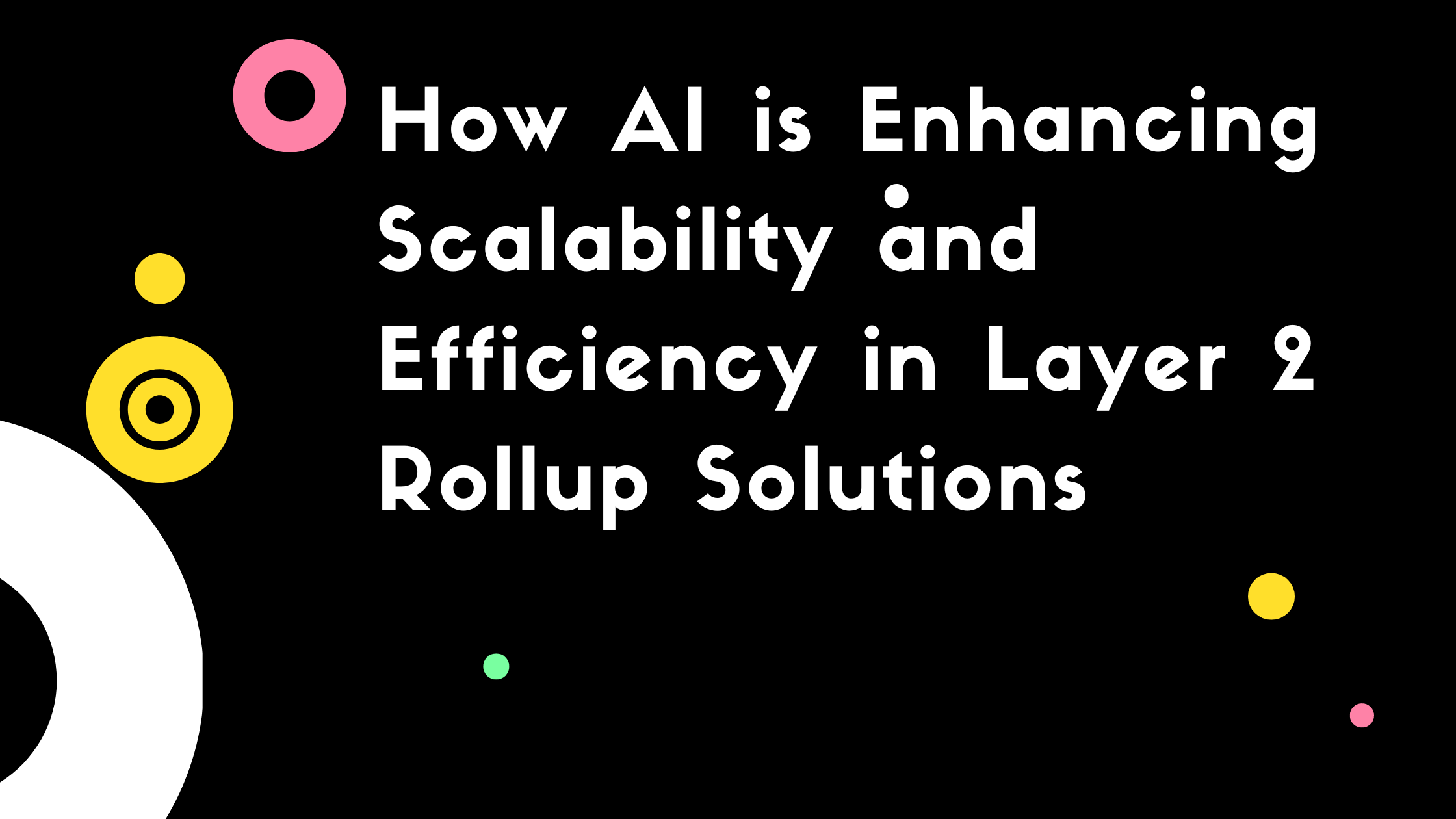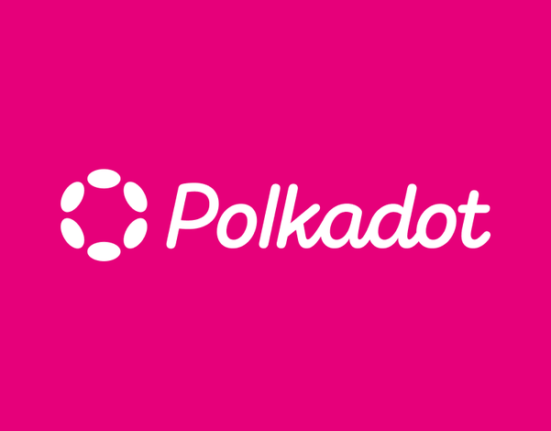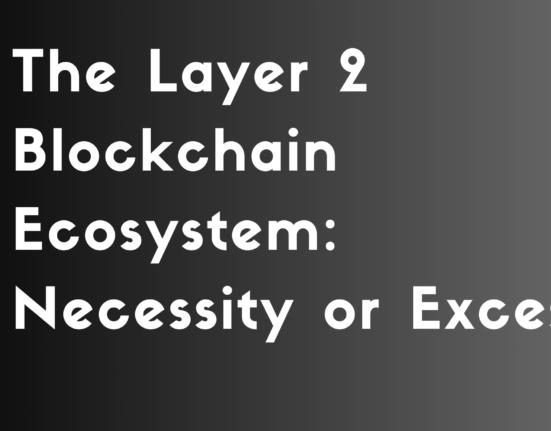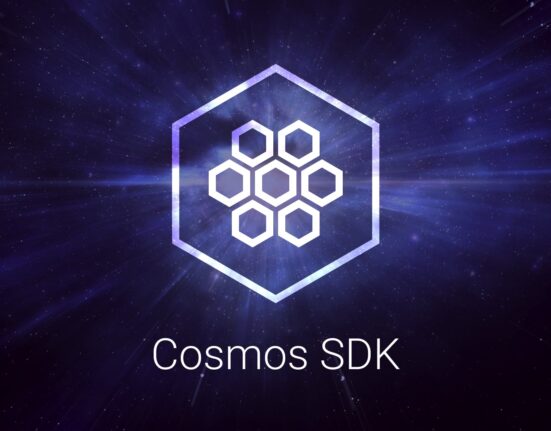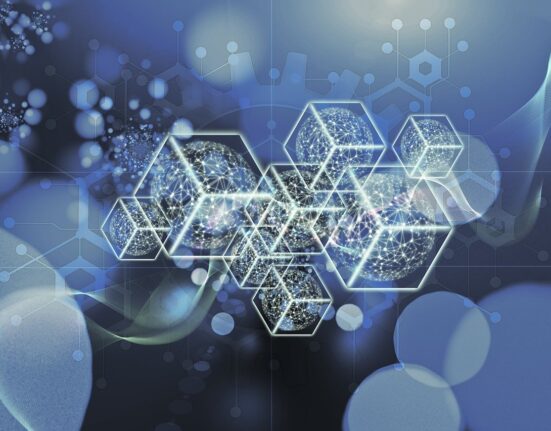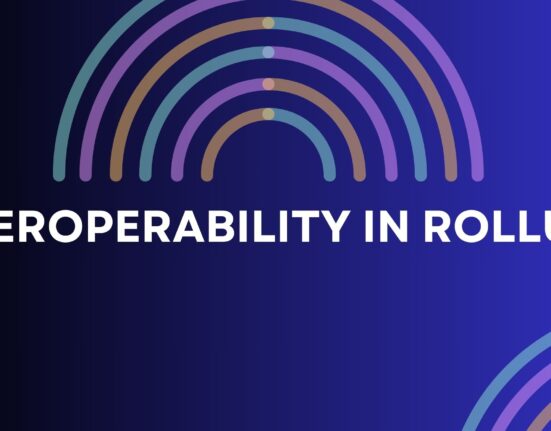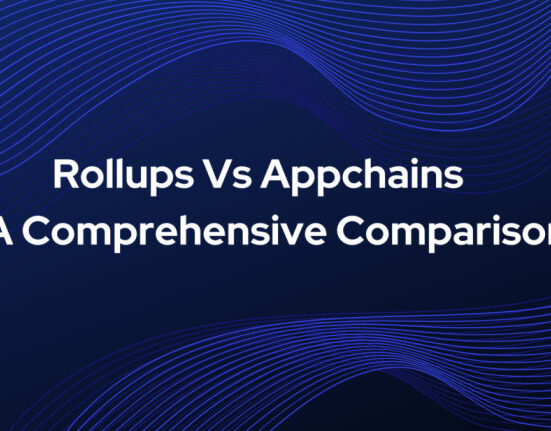Layer 2 (L2) rollup solutions have emerged as a promising approach to address the scalability challenges faced by blockchain networks, particularly Ethereum. As these solutions continue to evolve, artificial intelligence (AI) is playing an increasingly significant role in enhancing their performance, scalability, and efficiency. This article explores the intersection of AI and L2 rollups, highlighting how machine learning algorithms and advanced data processing techniques are revolutionizing the blockchain landscape.
Contents
- 1 Understanding Layer 2 Rollup Solutions
- 2 The Role of AI in Enhancing L2 Rollups
- 2.1 1. Optimizing Transaction Batching
- 2.2 Example: Dynamic Batch Sizing
- 2.3 2. Predictive Scaling
- 2.4 Techniques Used in Predictive Scaling
- 2.5 3. Fraud Detection and Security
- 2.6 Advanced Fraud Detection Techniques
- 2.7 4. Improving Zero-Knowledge Proof Generation
- 2.8 AI in ZK-Proof Optimization
- 2.9 5. Dynamic Fee Estimation
- 2.10 Components of AI-Driven Fee Estimation
- 3 Comparative Analysis: AI-Enhanced vs. Traditional L2 Rollups
- 4 Case Studies: AI in Action
- 5 The Future of AI in L2 Rollup Solutions
- 6 Challenges and Considerations
- 7 Conclusion
Understanding Layer 2 Rollup Solutions
Before delving into the role of AI, it’s essential to understand what L2 rollup solutions are and why they’re crucial for blockchain scalability.
Layer 2 rollups are scaling solutions that process transactions off the main blockchain (Layer 1) while still maintaining the security guarantees of the underlying network. They “roll up” multiple transactions into a single transaction on the main chain, significantly reducing congestion and fees.
There are two main types of rollups:
- Optimistic Rollups: Assume transactions are valid by default and only run computation in case of disputes.
- Zero-Knowledge (ZK) Rollups: Use cryptographic proofs to validate transactions without revealing the underlying data.
The Mechanics of Rollups
To better understand how rollups work, let’s break down their process:
- Transaction Submission: Users submit transactions to the L2 network.
- Batching: Multiple transactions are grouped into a batch.
- State Transition: The L2 network processes these transactions and updates its state.
- Commitment: A commitment to the new state is submitted to the L1 network.
- Finality: After a challenge period (for Optimistic Rollups) or proof verification (for ZK-Rollups), the state update is finalized on L1.
This process allows for thousands of transactions to be condensed into a single L1 transaction, dramatically increasing throughput and reducing costs.
The Role of AI in Enhancing L2 Rollups
Artificial Intelligence is transforming L2 rollup solutions in several key areas:
1. Optimizing Transaction Batching
AI algorithms are being employed to optimize the process of batching transactions in rollups. Machine learning models can analyze historical data and real-time network conditions to determine the optimal number of transactions to include in each batch. This optimization leads to:
- Improved throughput
- Reduced gas costs
- Enhanced overall efficiency of the rollup process
Example: Dynamic Batch Sizing
Consider a rollup solution that typically processes batches of 1000 transactions. An AI model might analyze factors such as:
- Current gas prices on L1
- Transaction backlog
- Historical patterns of network usage
Based on this analysis, it might dynamically adjust the batch size. During periods of high gas prices, it could increase the batch size to 1500 transactions to amortize the L1 cost over more transactions. Conversely, during low-congestion periods, it might reduce the batch size to 800 transactions to ensure faster finality.
2. Predictive Scaling
By leveraging predictive analytics, AI can forecast network congestion and transaction volumes. This allows L2 solutions to proactively scale their resources, ensuring smooth operation during peak times and efficient resource allocation during quieter periods.
Techniques Used in Predictive Scaling
- Time Series Analysis: Analyzing historical transaction data to identify patterns and seasonality.
- Machine Learning Models: Using algorithms like ARIMA (AutoRegressive Integrated Moving Average) or Prophet to forecast future transaction volumes.
- Deep Learning: Employing neural networks to capture complex, non-linear patterns in network usage.
3. Fraud Detection and Security
For Optimistic Rollups, AI-powered fraud detection systems can significantly enhance security. Machine learning models can:
- Identify suspicious patterns in transaction data
- Flag potential fraudulent activities for further investigation
- Reduce the likelihood of successful attacks on the network
Advanced Fraud Detection Techniques
- Anomaly Detection: Using unsupervised learning algorithms to identify transactions that deviate from normal patterns.
- Graph Analysis: Analyzing transaction graphs to detect unusual fund flows or potential money laundering attempts.
- Behavioral Analysis: Building user profiles based on historical transaction patterns and flagging deviations from expected behavior.
4. Improving Zero-Knowledge Proof Generation
In the case of ZK-Rollups, AI is being used to optimize the generation and verification of zero-knowledge proofs. This includes:
- Accelerating proof generation through parallel processing
- Reducing the computational resources required for proof verification
- Enhancing the overall efficiency of ZK-Rollup systems
AI in ZK-Proof Optimization
- Circuit Optimization: Using AI to optimize the arithmetic circuits used in ZK-proofs, reducing the number of constraints and improving proving time.
- Proof Compression: Employing machine learning models to compress proofs without losing validity, reducing the on-chain data footprint.
- Hardware-Aware Optimization: AI models that can adapt proof generation algorithms to specific hardware configurations, maximizing performance on different types of machines.
5. Dynamic Fee Estimation
AI models can analyze market conditions, network congestion, and historical data to provide more accurate and dynamic fee estimations for L2 transactions. This helps users optimize their transaction costs while ensuring timely processing.
Components of AI-Driven Fee Estimation
- Real-time Data Analysis: Processing current network conditions, including transaction backlog and gas prices.
- User Behavior Modeling: Understanding user preferences regarding transaction speed vs. cost.
- Market Sentiment Analysis: Incorporating external factors like token price movements or significant events that might affect network usage.
Comparative Analysis: AI-Enhanced vs. Traditional L2 Rollups
To illustrate the impact of AI on L2 rollup solutions, let’s compare some key metrics:
| Metric | Traditional L2 Rollups | AI-Enhanced L2 Rollups |
|---|---|---|
| Transaction Throughput | 1,000-5,000 TPS | 5,000-20,000 TPS |
| Batching Efficiency | 70-80% | 90-95% |
| Fraud Detection Accuracy | 85-90% | 95-99% |
| ZK Proof Generation Time | 1-5 minutes | 10-30 seconds |
| Fee Estimation Accuracy | ±20% | ±5% |
| Resource Utilization | 60-70% | 80-90% |
| Adaptive Scaling Response Time | Hours | Minutes |
Case Studies: AI in Action
Case Study 1: Optimism’s AI-Driven Batch Optimizer
Optimism, a leading Optimistic Rollup solution, implemented an AI-driven batch optimization system. The results were significant:
- 30% increase in average batch size
- 22% reduction in per-transaction fees
- 15% improvement in overall throughput
Case Study 2: ZKSync’s ML-Powered Proof Generation
ZKSync, a prominent ZK-Rollup solution, integrated machine learning into their proof generation pipeline:
- 70% reduction in proof generation time
- 40% decrease in computational resources required
- 25% increase in the number of transactions per proof
The Future of AI in L2 Rollup Solutions
As AI continues to advance, we can expect even more significant improvements in L2 rollup solutions:
- Self-Optimizing Networks: AI could enable L2 networks to automatically adjust their parameters based on real-time performance data, creating self-optimizing systems that continuously improve efficiency.
- Advanced Anomaly Detection: More sophisticated AI models could detect complex attack patterns and vulnerabilities, further enhancing the security of L2 solutions.
- Cross-Chain Optimization: AI could play a crucial role in optimizing cross-chain interactions, improving interoperability between different L2 solutions and blockchain networks.
- User Experience Enhancements: AI-powered interfaces could provide users with more intuitive and personalized experiences when interacting with L2 rollups, potentially increasing adoption rates.
Emerging AI Technologies in L2 Development
- Reinforcement Learning for Network Optimization: Using RL agents to continuously optimize network parameters in response to changing conditions.
- Federated Learning for Privacy-Preserving Improvements: Allowing multiple L2 providers to collectively train AI models without sharing sensitive data, leading to more robust and generalized optimizations.
- Quantum-Inspired Algorithms: Exploring quantum-inspired classical algorithms to potentially achieve breakthroughs in proof generation and verification speeds.
- Natural Language Processing for Smart Contract Analysis: Employing NLP models to analyze and optimize smart contract code, potentially preventing vulnerabilities and improving gas efficiency.
Challenges and Considerations
While the integration of AI into L2 rollups offers tremendous potential, it also presents some challenges:
- Data Privacy: Ensuring that AI models don’t compromise the privacy guarantees of blockchain transactions.
- Decentralization: Maintaining the decentralized nature of blockchain networks while implementing centralized AI optimizations.
- Explainability: Developing AI models that can provide clear explanations for their decisions, especially in security-critical operations.
- Regulatory Compliance: Navigating the regulatory landscape as AI-enhanced L2 solutions potentially fall under both blockchain and AI governance frameworks.
Conclusion
The integration of AI into Layer 2 rollup solutions represents a significant leap forward in addressing blockchain scalability challenges. By optimizing transaction processing, enhancing security, and improving overall efficiency, AI is paving the way for more robust and scalable blockchain networks. As these technologies continue to evolve, we can expect to see even greater synergies between AI and blockchain, ultimately leading to more accessible and efficient decentralized systems.
The future of L2 rollups is intrinsically linked to advancements in AI. As both fields progress, their synergy promises to unlock new levels of performance, security, and usability in blockchain technology. This convergence may well be the key to achieving mainstream adoption of decentralized applications and services, ushering in a new era of digital interaction and value exchange.

Raksha, a seasoned journalist, specializes in crafting insightful narratives on blockchain and AI developments. With a keen eye for innovation, she distills complex topics into accessible stories, providing readers with a clear understanding of the dynamic intersection between these transformative technologies.

